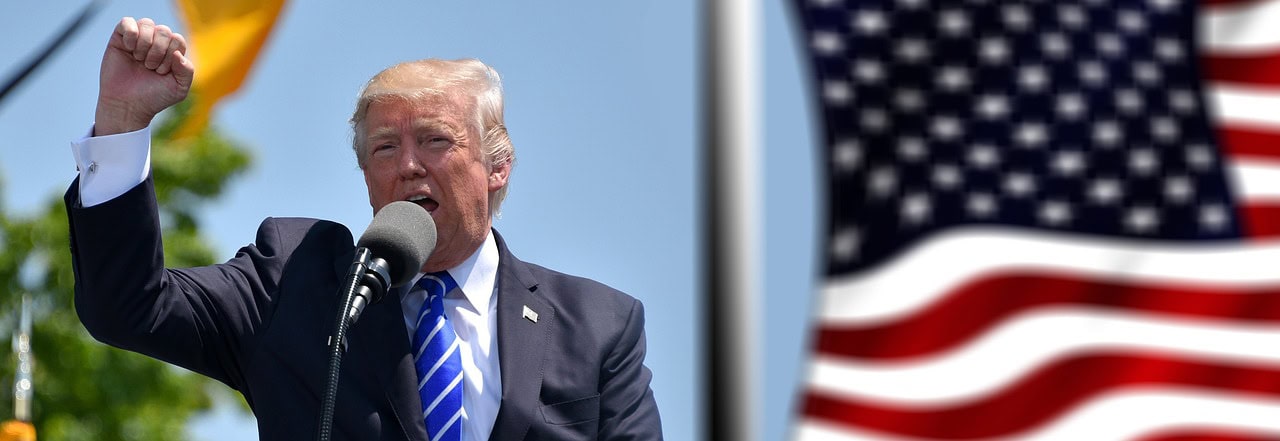What is H1B Visa ? How much fee hiked ? What is the impact on India ?
The H1B visa fee hike 2025 has created widespread concern among Indian professionals and U.S. companies alike. The H-1B visa, a non-immigrant visa program, allows…
The H-1B visa is a non-immigrant visa that allows U.S. employers to temporarily employ foreign workers in “specialty occupations” that generally require a bachelor’s degree or higher. These occupations often include fields in science, technology, engineering, and mathematics (STEM). The H-1B program is highly utilized by U.S. tech companies and is a key pathway for skilled foreign professionals, particularly from India, to work in the United States.
Recently, in September 2025 , an executive order was signed that significantly altered the H-1B visa program by imposing a new, substantial fee of USD 100,000 . Now clarifications have been issued in the matter :
RELIEF TO INTERNATIONAL STUDENTS
UPDATE dated 23.10.2025 : The U.S. government has issued significant clarifications and detailed guidance on the new H-1B policy in the days following the initial proclamation. These updates are crucial for understanding the true scope of the changes.
The main clarification has been issued by U.S. Citizenship and Immigration Services (USCIS) regarding the $100,000 fee.
Key Clarifications on the $100,000 Fee
The USCIS guidance has provided major relief by specifically defining who does and does not have to pay the new fee:
| Status | $100,000 Fee Applicability | Details |
| New Petitions (Outside the US) | YES (The fee applies) | Applies to a new H-1B petition filed on or after September 21, 2025, for a worker who is outside the United States and does not hold a valid H-1B visa. This is the primary target of the new fee. |
| Change of Status (Inside the US) | NO (The fee is exempted) | A major relief for students. International students on F-1 visas, or other individuals on L-1 or H-4 visas, who apply for a Change of Status to H-1B while remaining inside the United States will not be subject to the $100,000 fee, provided the change is approved. |
| Extensions/Renewals (Inside the US) | NO (The fee is exempted) | As previously noted, existing H-1B holders applying for an extension or amendment of their status while remaining inside the United States are exempt from the fee. |
| Travel of Current H-1B Holders | NO (The fee is exempted) | Current H-1B visa holders or beneficiaries of an approved petition can travel and re-enter the U.S. without paying the new fee, provided their petition was filed before the effective date (September 21, 2025). |
| Ineligible Change of Status | YES (The fee may apply) | If a petition is filed for a Change of Status while the beneficiary is in the U.S., but USCIS determines the individual is ineligible for the change or extension (e.g., they failed to maintain their previous status or left the U.S. during processing), the employer will be required to pay the fee. |
| Consular Processing Request | YES (The fee applies) | If a petition is filed from within the U.S. but requests consular notification (meaning the individual intends to get their visa stamp at an embassy/consulate abroad), the $100,000 fee generally applies. |
Other Policy Changes in Motion
The presidential proclamation also set in motion other major regulatory changes, which the relevant agencies are currently developing:
- Weighted Lottery System: The Department of Homeland Security (DHS) has proposed a rule to modify the H-1B lottery from a purely random selection to a weighted selection process that would favor higher-paid, more skilled workers. For example, applicants at a high-salary (Wage Level IV) tier would have their registration entered into the lottery multiple times, significantly increasing their chances of selection compared to lower-paid (Wage Level I) applicants.
- Higher Prevailing Wages: The Department of Labor (DOL) has been directed to initiate rule-making to revise and raise the required prevailing wage levels for H-1B, H-1B1, and E-3 visas. This is intended to ensure that employers must offer significantly higher wages to H-1B workers, reducing the incentive to hire foreign workers over U.S. workers based on cost.
In summary, the most immediate clarification is the narrow targeting of the $100,000 fee primarily at new applicants applying from outside the U.S. This offers a significant reprieve to international students and employees on other visa categories who are already in the U.S. and transitioning to H-1B status. However, the new rules for prevailing wages and the weighted lottery are long-term policy shifts that will affect all future H-1B petitions, including extensions and renewals.
Changes to the H-1B Visa Program ( reported on 21.09.2025 )
The recent executive order introduces a one-time fee of $100,000 for each new H-1B visa application. This is a dramatic increase from previous fees, which typically ranged from $2,000 to $5,000 depending on the employer’s size and other factors.
Key points about the new fee:
- One-time fee: The $100,000 charge is a one-time fee for new visa petitions, not an annual fee.
- Applies to new visas only: The new fee applies only to new H-1B visa applications and will be implemented starting with the next lottery cycle. It does not affect current visa holders or those who are renewing their visas.
- Exemptions: The order includes exemptions for visa applications for workers in the healthcare and engineering industries. The Secretary of Homeland Security also has the discretion to waive the fee for workers or industries deemed vital to national interests.
There was initial confusion about whether the new H-1B visa fee would apply to existing visa holders, particularly those seeking to renew their status or traveling abroad. While Commerce Secretary Howard Lutnick underlined Friday that $100,000 was an annual fee for H-1B visas, White House Press Secretary Karoline Leavitt Saturday afternoon said it was a “one-time fee” and applied “only to new visas, not renewals, and not current visa holders.”She added: “It will first apply in the next upcoming lottery cycle.”She posted on X that those who already hold H-1B visas and are currently outside the US will not be charged $100,000 to enter. “H-1B visa holders can leave and re-enter the US to the same extent as they normally would; whatever ability they have to do that is not impacted by the proclamation,” Leavitt said.
The new $100,000 fee does not apply to renewals for existing H-1B visa holders. It is a one-time fee that will only be imposed on new H-1B visa applications, starting with the upcoming lottery cycle.
Here’s a breakdown of the key clarifications:
- New Applicants Only: The fee is specifically for companies filing new petitions to secure an H-1B visa for a foreign worker.
- Renewals are Exempt: Existing H-1B visa holders who are already in the U.S. will not be subject to this new fee when they apply for an extension or renewal of their visa.
- No Impact on Travel: The fee will also not be charged to current H-1B visa holders who are traveling outside the U.S. and need to re-enter. Initial panic and advisories from some companies urging employees to return immediately were based on a misunderstanding of the executive order’s scope.
- One-time Fee: The fee is not an annual charge, as some early reports suggested. It is a one-time cost associated with the initial visa petition.
This clarification offers significant relief to the thousands of Indian professionals currently working in the U.S. on H-1B visas. While it does not affect their current status, it will still have a major impact on the future pipeline of skilled talent seeking to come to the U.S. through the program. The policy shift is expected to deter companies, especially those relying on a large number of entry-level H-1B workers, from filing new petitions due to the prohibitive cost.
Impact on Indian People and the Indian Government
This new policy has a profound and direct impact on Indian professionals and the Indian government.
For Indian Professionals:
- Significant Barrier: Indian nationals are the largest group of H-1B visa recipients, accounting for over 70% of approved petitions in recent years. The drastic increase in the cost of sponsorship will likely make it much harder for many to secure a visa.
- Reduced Opportunities: The high cost could discourage U.S. companies, especially smaller firms and startups, from hiring foreign talent. This could lead to a reduction in the number of H-1B petitions filed, particularly for entry-level or junior roles. Opportunities may be limited to highly specialized or senior professionals for whom companies are willing to pay the premium.
Uncertainty and Disruption: The rapid implementation of the new policy caused confusion and panic, with some companies advising H-1B employees who were abroad to return to the U.S.immediately to avoid potential complications. Although a clarification was issued that the fee would not affect existing visa holders, the initial uncertainty highlights the potential for disruption to personal and professional lives.
For the Indian Government:
Potential for “Brain Gain”: Some analysts suggest that the new restrictions could serve as a catalyst for “brain gain” in India. If the outflow of top talent to the U.S. slows, it could lead to more skilled professionals staying and contributing to India’s own domestic innovation, startup ecosystem, and economic growth. However, this depends on India’s ability to create a supportive environment with adequate infrastructure, capital, and regulatory frameworks.
Diplomatic Concern: The Indian government has expressed serious concern over the move, citing its potential to disrupt the lives of skilled professionals and their families. It has noted that talent mobility contributes to innovation and economic growth in both countries and that the policy’s humanitarian consequences need to be addressed.
Impact on the Tech Sector: India’s IT services sector, a major pillar of its economy, relies heavily on the H-1B program to staff projects in the U.S. The increased cost could disrupt business continuity for these companies, forcing them to reconsider their hiring and business strategies.
If a H1B visa holder changes employer ?
Changing employers while on an H-1B visa is a common process often referred to as an “H-1B transfer” or “portability.” However, it’s important to understand that it is not a “transfer” in the traditional sense; rather, the new employer must file a brand new H-1B petition on the employee’s behalf.
Here is a breakdown of the status and process:
The “Portability” Rule
Under the American Competitiveness in the Twenty-First Century Act (AC21), H-1B holders are granted “portability.” This crucial provision allows an H-1B worker to begin working for the new employer as soon as the new H-1B petition is filed with U.S. Citizenship and Immigration Services (USCIS), without waiting for the petition to be approved.
This provides a significant benefit by allowing for a smooth transition between jobs and avoiding gaps in employment.
Key Aspects of the H-1B Transfer Process
- New Petition Required: The new employer must file a new H-1B petition (Form I-129) with USCIS. This petition must be non-frivolous and supported by a certified Labor Condition Application (LCA) from the Department of Labor.
- Cap-Exempt Status: A major advantage of an H-1B transfer is that it is not subject to the annual H-1B cap. Once a person has been counted against the cap, they are generally exempt from it for future H-1B petitions, including transfers, as long as they are maintaining their H-1B status. This means they don’t have to go through the H-1B lottery again.
- Grace Period: If an H-1B worker’s employment is terminated, they are generally entitled to a 60-day grace period (or until their I-94 expires, whichever is shorter) to find a new employer who will file a new H-1B petition for them. During this time, they are considered to be in a “period of authorized stay.” If a new petition is filed within this grace period, they can start working for the new employer as soon as USCIS receives the petition.
- The New Fee: The new $100,000 fee is for new H-1B visa applicants and does not apply to renewals or transfers for existing visa holders. This means an H-1B visa holder transferring employers will not be subject to this fee. However, the new employer will still have to pay the standard filing and other associated fees, which can range from a few hundred to several thousand dollars.
- Required Documentation: The new employer will need to provide various documents, including the new job offer, a detailed job description, and company financial information. The employee will also need to provide personal documents, such as their valid passport, current visa, I-94 record, pay stubs, resume, and educational credentials.
The Status During and After the Transfer
- During the Transfer: Once the new petition is filed, the H-1B visa holder is authorized to begin work for the new employer. Their status is considered “pending” until USCIS makes a decision.
- After Approval: If the petition is approved, the H-1B holder receives a new Form I-797, Notice of Action, which serves as the official approval of their new H-1B status with the new employer.
- If the Petition is Denied: If, for any reason, the new petition is denied, the H-1B holder’s work authorization for the new employer ceases immediately. They must stop working for the new employer and may have to leave the U.S. or find another way to maintain their legal status.
Link to authoritative sources like:
For more information Contact us





